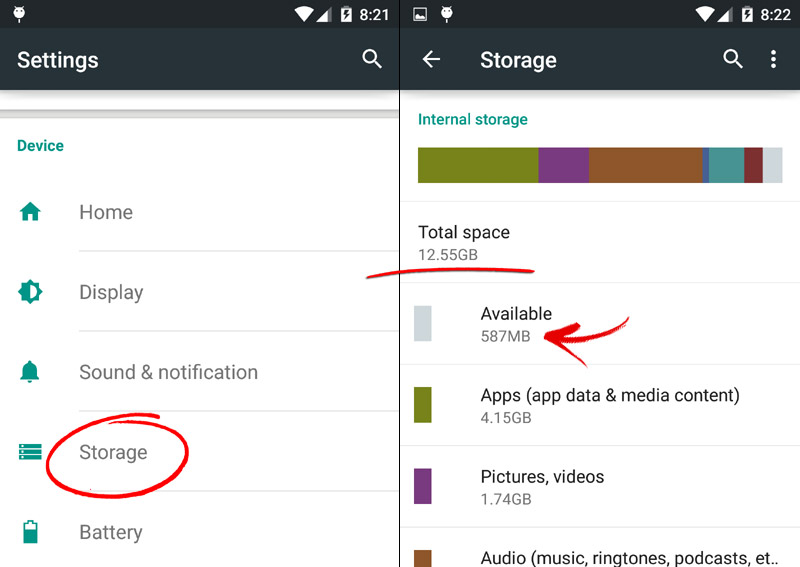Ihr Android-Handy läuft langsam. So beheben Sie das Problem!
It’s a year since you got your new Android phone and you’ve been using it every day since. Suddenly you noticed that it starts slowing down, and even sometimes becomes unresponsive. Sounds familiar?
You are likely one of the 80% of users who experience exactly the same phenomenon. So what causes a once so fast device suddenly loosing that much of its performance?
The general answer to the problem is simple: It’s the operating system that starts slowing you down. But let’s not stick to this simplistic answer and have a look at a couple of tricks to revive your phone and give it back some of its original performance – if not everything – at least a bit!
Here are some of the reasons why Android phones can slow down after a few month of usage:
Your phones memory is nearly exhausted
You had if for a year, taken close to 5000 pictures and small videos with it. Probably you installed around 15 helper apps and games – and logically your phone’s memory is at 90%. The more digital data you collect on your device, the higher the probability that it will slow down.
There are too many apps running in the Background
One of the great features of the Android Operating System is the capability to multitask. Multitask means it can execute several applications at the same time. As applications usually don’t shut down when you exit them, and just switch to the background, there is a toll on your phones performance. Also running widgets on your home screen, alongside with animated wallpapers and apps in the background can seriously impact your phones speed.
The Operating System Version is just overloading your phones capabilities
Phone producers preload the phone with the latest Operating System Version, which is great. Since you probably don’t buy a smartphone every month, your user experience is upgraded by upgrading the Operating System on your Phone.
In general upgrades are a good thing as they usually fix flaws and loopholes which would expose your phone to security risks, but on the other hand upgrades do also install apps which the phone promotes. These apps bloat your phones performance as they are most times – running in the background and draw resources.
Now that we are aware of the reasons, let’s try and fix them
Before we do anything, you need to determine how much storage you have used and how much storage is still available on your device.
Therefor find “Settings” and from there tap “Storage”.

In this specific example you can see that there are only 587 MB free space available, so this device will probably run very slow as there are less than 10% free space available.
So, how do you get your device back to its original performance?
Usually, if you search the web for solutions to the problem the below are the most common you will come up with:
- Uninstall all apps you are not using and regularly check for those running in the background
- Find a good phone boosting app
- Factory reset your phone as a last resort
- Root your device and get rid of all of the bloatware apps installed when your OS updated
To all the above, there is a downside. They are all prone loosing data somewhere in the process and – they do not have a permanent impact on your phones performance.
So what has a permanent impact on your phones performance?
Step 1: Close all running apps, which you are not actively using. This does not impact Communication Apps like Skype or Viber. They will continue running in the background and display messages if someone contacts you.
Step 2: Unload your phones memory. Get rid of all images, videos and music you do not need. You could do 2 things:
- Connect your phone to a Desktop Computer and transfer everything to this computer, then delete your data. Pay attention that your computer is backed up – otherwise you might lose data here as well.
- Install a Cloud Storage App such as Dropbox or iCloud and have everything backed up to the cloud. Once the data is safely synchronized to the cloud, delete the data from your device. Your pictures and videos will still be with you, the only catch is that you’ll access them through the cloud.
As I have mentioned at the beginning. It’s about keeping your Android device tidy. Tidy starts by mainly getting the unused data (images, videos, music) off your device. Backing up your important photos, videos will synchronously safeguard all data, and is best done through cloud storage.

